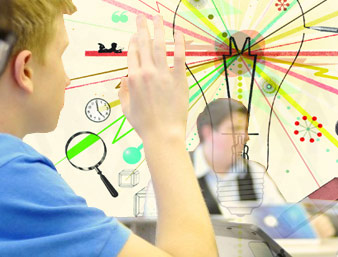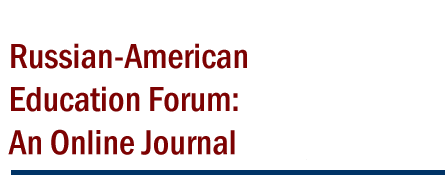

Volume:5, Issue: 3
Aug. 15, 2013


Aug. 15, 2013
Dear friends, colleagues, faithful readers, and new visitors to our website:
The idea and the topic of this journal issue were born long ago. As you probably noticed, we have already touched upon innovations and innovative methods in education in different educational institutions many times before but only now we are able to present to you the whole journal issue fully dedicated to the topic, “Innovations and Innovational Approaches in Education.”
It feels that due to the journal topic and number (if to count from the very beginning, this issue is NO. 13!) we are facing here quite a few novelties. To start with, we are introducing a new section in the journal which would be represented by one of the journal founders and inspirers, a famous Russian scholar, publisher and editor, Vladimir M. Lizinsky, whose brilliant mind and sense of humor will, hopefully, impress every reader. By the way, looking for an interesting title of his section, we have finally decided not to invent anything special and leave it as is, “Thoughts on Education from Vladimir Lizinsky.”
One more novelty of this particular issue is the presence of the second article in the section on history of education from the Kursk university instructors Dr. Marina N. Vetchinova and Polina V. Gerasenkova who wrote about innovative approaches in teaching foreign languages in Russian schools for the elite of the 19th-beginning of the 20th century. This article comes along with the paper of our constant author, a famous Russian academic Mikhail V. Boguslavsky who never stops to surprise us with “new” names from the almost forgotten Russian past. This time he presents a description of the life and professional journey of an incredible Russian teacher Nadezhda I. Popova whose name would certainly add to the names of other famous Russian thinkers, already published in previous journal issues.
And finally, the third novelty that is always pleasant. We are happy to widen the “geography” of our authors and to introduce to you an intellectually challenging paper written by an interesting Israeli academic Marc Silverman. His essay is about an eternal topic of moral education and innovative approaches to its realization in the works and practice of Janusz Korczak, whose name, hopefully, we don’t need to introduce to our readers. Our editorial board admires Korczak’s ideas, and we are always happy to reconsider his educational principles, especially when they are presented in such an original and exceptional way.
It is my pleasure to introduce another new author – a Russian educator Valentina Khorosh with her article about the ballroom dance culture. Clearly, a ballroom dance as part of the Russian culture of the past could hardly be considered innovative, but using it as an element of students’ educational support, and as an important and effective tool of their moral development and aesthetic formation is truly impressive and thought-provoking. Two more articles from Russian researchers – Pavel V. Stepanov about approaches to develop tolerance in teenagers and Sergey D. Polyakov’s description of his recent research also in his work with teenagers – are worth reading and will surely cause new ideas in your research as well, our dear readers.
It is probably due to the topic, that every article is interesting in its own way. Here is Dan Freeborn and his Walden project. I have met with Dan recently at the Seattle Pacific University symposium and was literally smitten with his presentation. In his journal paper he is giving a full description of this project and its impact on his students. What is most impressive and important for us is that the project is quite adaptable to the work of other teachers regardless of their national or geographical belonging. I look forward to hearing your responses to this paper, and I also welcome responses from Mr. Freeborn’s graduates as well.
And finally, I am happy as usual to greet my American colleagues – Professor Melinda Pierson with the paper about common core standards and the way they change American education; and Professors James Hynes and William Edgington’s article about the role of American Amish communities in helping to provide innovative professional training to their counterparts from Uganda. As for Dr. Pierson’s article, I can only imagine the surprise of my Russian colleagues who will learn that the educational authorities in the USA have also decided to move towards creating and adapting common core standards for all public schools in the country, which is certainly a hot and ambiguous topic in Russia.
As much as I would love to continue, I sense, it is time to stop and to invite you to start reading. As always, the editorial board looks forward to receiving your feedback and comments.
Always yours,
Tatyana Tsyrlina-Spady
Editor-in-Chief
tsyrlina@aol.com
Home | Copyright © 2025, Russian-American Education Forum